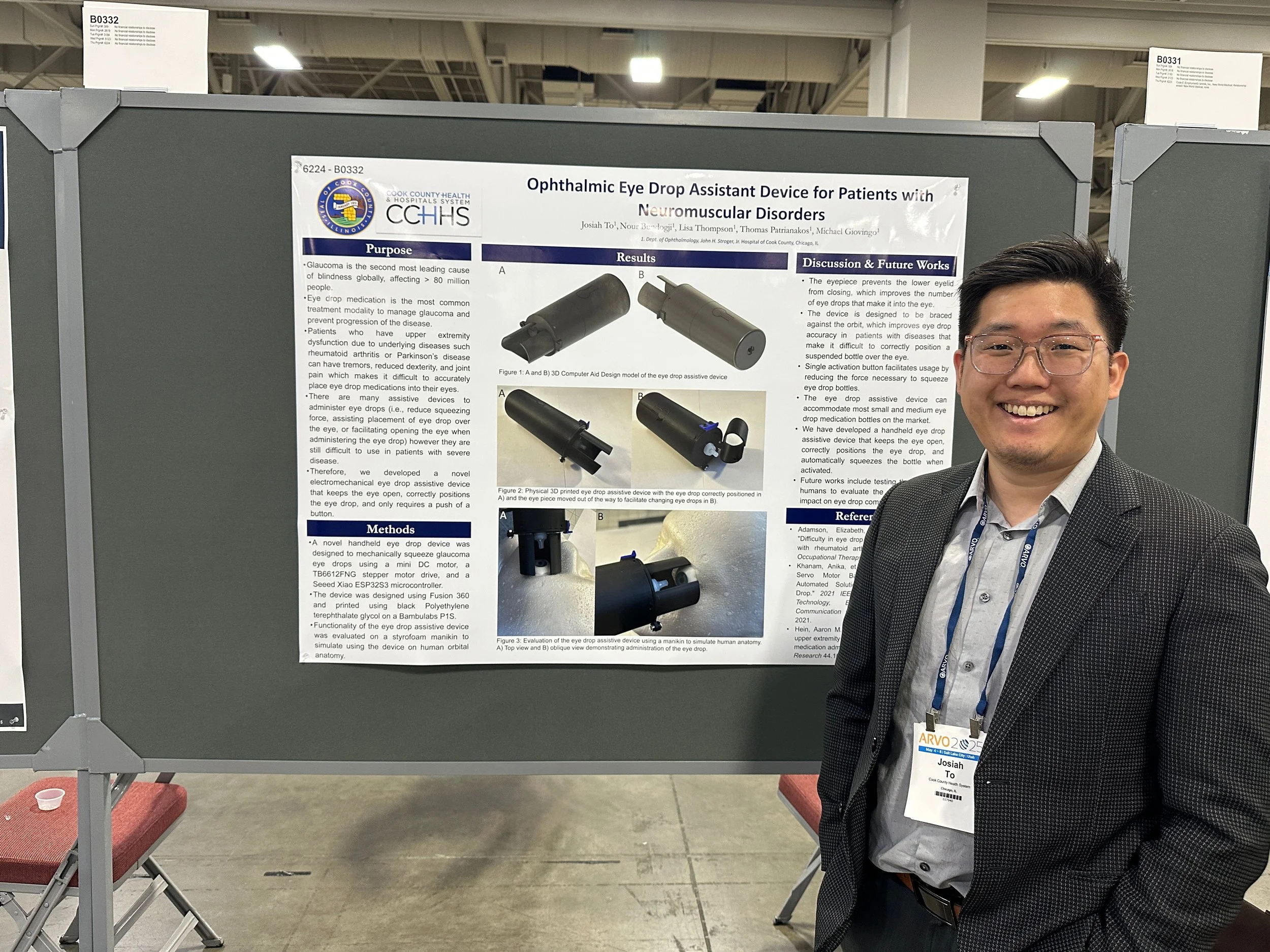
Motorized Eye Dropper Device
Designing and building a motorized device to help patients self-administer eye drops.
EXPLORE THE PROJECT
Glaucoma patients with co-morbid diseases that affect upper extremity fine motor skills (e.g., Parkinson’s, arthritis) often struggle to apply eye drops correctly.
This project aimed to create a handheld solution that could help patients administer eye drops:
Ergonomic
Automatically delivers the eye drop
Keeps the eye open
Improves positional accuracy
PROJECT GOALS
Button-activated delivery with stabilized drop placement.
The device uses a single-button interface to activate a miniature motor that squeezes and dispenses an eye drop. The eyepiece gently braces against the orbital rim and mechanically holds the lower eyelid open, ensuring accurate delivery directly over the eye. The device is completely powered by 4x AAA batteries. By removing the need for hand precision or squeezing force, the device makes drop administration easier and more consistent for users with limited motor function.
HOW IT WORKS
I designed and modeled the parts in Fusion 360 and printed using PETG on a Bambulabs P1S. Internally, a Seeed Xiao ESP32S3 microcontroller communicates with a TB6612FNG H-bridge motor driver, which activated a 6V miniature DC motor. The motor translate rotational motion into opposing linear movement to squeeze the eye drop. The image below demonstrates the front (A) and back (B) of the CAD model.
HOW ITS BUILT
Improved usability, comfort, and drop accuracy in bench testing.
Eyepiece design effectively holds the eyelid open during drop delivery.
Orbit-braced design improves stability and alignment, especially for tremor-prone hands.
Single-button activation simplifies use by removing the need for hand strength or grip precision.
Drop compatibility was tested across a range of small and medium-sized ophthalmic bottles.
Initial bench testing on manikin models showed promising results in terms of drop accuracy and ease of use.
RESULTS
Functional Prototype
The device has a mobile eyepiece to facilitate eye drop bottle installment and still be able to stabilize the device on the orbit. The eyepiece can be engaged (A) to help stabilize the device on patients’ orbit or twisted back (B) to make it easier to install/remove eye drop bottles.
Testing
The device was tested on a manikin head while human testing is pending IRB approval.
Next steps include ergonomic refinement and pilot testing in human users.
FUTURE GOALS
1. Device Development
Evaluate usability, comfort, and the device’s impact on medication compliance.
Improving clamping force to it is more difficult to administer an eye drop when bottles are near empty.
Additional features such as drop counters or digital reminders may be explored to support adherence in patients managing chronic eye conditions.
2. Clinical Next Steps
Submission of a local Illinois grant to the Society for the Prevention of Blindness (ISPB).
Work through the Cook County Institutional Review Board application so that the device can be used on humans.
Once IRB is approved, recruit healthy normal patients to evaluate the impact of the device on eye drop compliance.
PRESENTING THE WORK
We presented present this work at the 2025 American Research for Vision and Ophthalmology (ARVO) conference in Salt Lake City.
